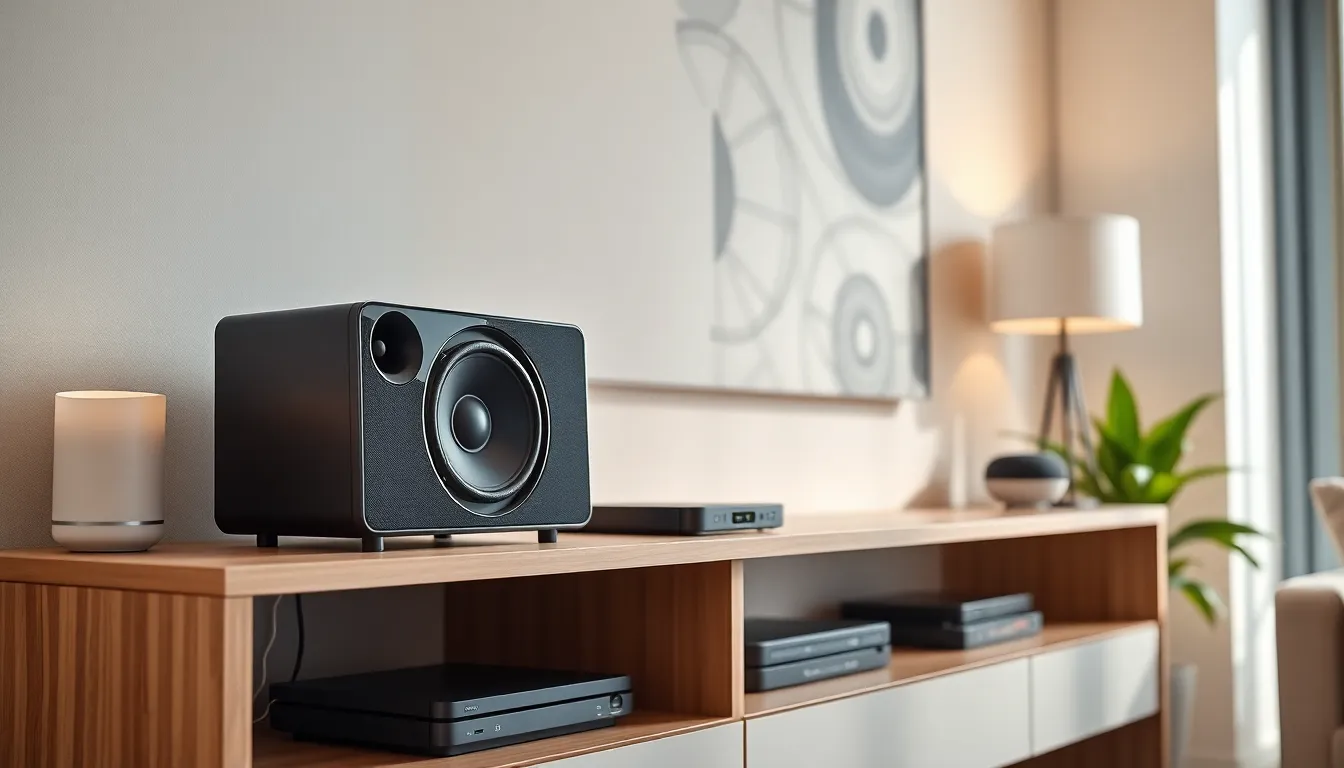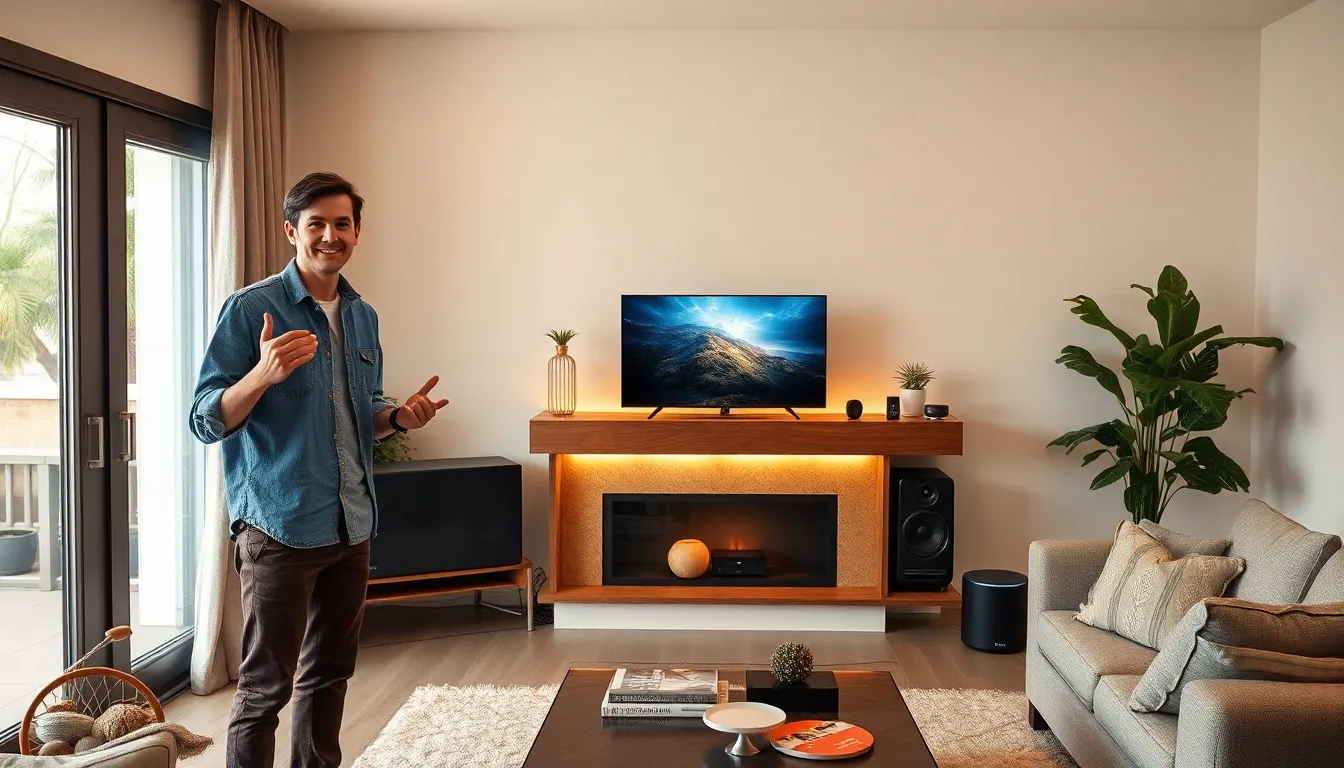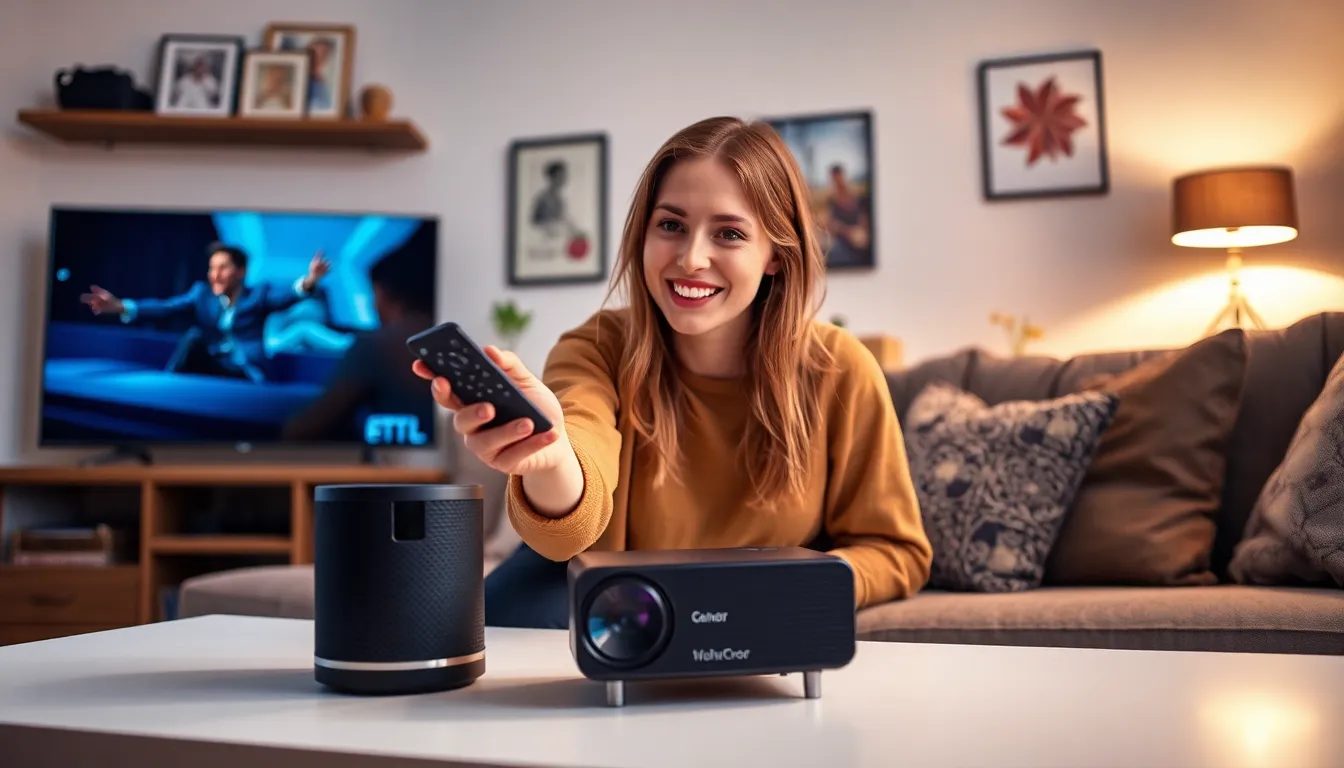In today’s tech-savvy world, smart sound systems are transforming the way people experience audio. These innovative devices seamlessly integrate with home automation, providing not just superior sound quality but also convenience and control. Imagine adjusting your playlist or setting the mood with a simple voice command while you go about your day.
As homes become smarter, the demand for intelligent audio solutions grows. Smart sound systems offer features like multi-room audio, personalized playlists, and compatibility with various streaming services, making them essential for any modern household. With an array of options available, understanding the benefits and functionalities of these systems can help anyone elevate their listening experience.
Table of Contents
ToggleOverview of Smart Sound Systems
Smart sound systems represent an evolution in audio technology, blending high-quality sound with advanced smart features. These systems enhance user experience by offering seamless integration with various devices and home automation.
What Are Smart Sound Systems?
Smart sound systems are audio setups equipped with internet connectivity and intelligent functionalities. These systems deliver high-fidelity audio while enabling features such as voice control and automation. Users control playback, adjust settings, and access streaming services through smartphones, tablets, or voice commands. These systems support various music formats and provide multi-room capabilities for a synchronized audio experience throughout the home.
Key Features of Smart Sound Systems
- Voice Control: Many smart sound systems integrate with virtual assistants like Amazon Alexa, Google Assistant, or Apple Siri, allowing users to operate them hands-free.
- Multi-Room Audio: Systems support multi-room setups, enabling users to play different audio in various spaces or synchronize music throughout the entire home.
- Streaming Services: They offer compatibility with services like Spotify, Apple Music, and YouTube Music, providing access to millions of songs and playlists.
- Smart Home Integration: These systems connect with other smart home devices, such as lights and thermostats, facilitating automation and improving user convenience.
- Personalization: Smart sound systems can learn user preferences, curating playlists and suggesting content based on listening habits.
- High-Quality Audio: Many models feature advanced audio technology, ensuring rich sound quality that meets the demands of audiophiles and casual listeners alike.
Smart sound systems redefine how individuals interact with music, creating versatile setups that cater to modern lifestyles.
Popular Brands in the Market

Numerous brands provide smart sound systems, each with unique features and strengths. The following brands stand out in the competitive landscape of advanced audio technology.
Brand A Overview
Brand A specializes in user-friendly smart sound systems that seamlessly integrate with various smart home devices. Their products feature voice control compatibility with multiple virtual assistants and allow for multi-room functionality. High-quality audio technology ensures an immersive listening experience, while their intuitive app simplifies setup and management. Brand A consistently receives high customer satisfaction ratings for reliability and sound performance.
Brand B Overview
Brand B is renowned for its premium sound quality and sophisticated design. This brand offers smart sound systems equipped with advanced audio engineering and compatibility with popular streaming services. Their systems support voice control and personalized audio settings, catering to individual preferences. Brand B emphasizes high-resolution audio formats, appealing to audiophiles seeking exceptional clarity and depth in their sound experience. Consistent innovation keeps Brand B at the forefront of smart audio technology trends.
Benefits of Smart Sound Systems
Smart sound systems offer numerous advantages that transform the audio experience in homes. Their advanced technologies enhance sound quality while seamlessly integrating with modern smart home setups.
Enhanced Audio Quality
Enhanced audio quality permeates every aspect of smart sound systems. These devices utilize high-resolution audio technology, delivering clear, rich sound across a range of frequencies. Users can enjoy immersive experiences with features like adaptive sound control, which automatically adjusts audio settings based on the room’s acoustics. Studies show that high-quality playback significantly improves listening experiences, making these systems ideal for music lovers and casual listeners alike.
Integration with Smart Home Devices
Integration with smart home devices creates a cohesive environment for users. Smart sound systems interact effortlessly with home automation systems, allowing control of lights, thermostats, and security systems through a single interface. This integration provides convenience and flexibility, enabling users to create personalized audio experiences. Voice command functionality adds another layer of control, permitting hands-free operation. Integration with platforms such as Amazon Alexa or Google Assistant enhances functionality, making management easier and more intuitive.
Considerations Before Purchasing
Smart sound systems offer impressive features, but several factors require careful consideration before making a purchase.
Budget and Pricing
Purchasing a smart sound system involves evaluating various budget options. Prices range from $100 for entry-level models to over $1,000 for premium systems. Users should assess their audio needs and determine if additional features justify higher prices. Consideration of not just initial costs but also potential additional expenses, such as subscriptions to streaming services or extra speakers for multi-room setups, is crucial. Researching price comparisons helps identify the best value within a desired budget.
Compatibility with Existing Devices
Ensuring compatibility with existing devices ranks high on the list of considerations. Smart sound systems must integrate seamlessly with smartphones, tablets, and smart home devices for optimal performance. Checking for compatibility with specific platforms, like Google Assistant or Amazon Alexa, enhances the user’s experience. Users should verify if their current Wi-Fi network can support the system, as some models require specific network capabilities. Compatibility with various audio formats, such as FLAC and WAV, may also influence decision-making, especially for audiophiles.
Smart sound systems are revolutionizing the way people experience audio in their homes. With seamless integration into smart home ecosystems and advanced features like voice control and multi-room audio, these systems cater to diverse listening preferences. They not only enhance sound quality but also offer unparalleled convenience and personalization.
As technology continues to evolve, smart sound systems will likely become even more sophisticated. The combination of high-resolution audio and intelligent functionalities makes them a worthwhile investment for anyone looking to elevate their audio experience. Whether for casual listening or serious audiophile enjoyment, smart sound systems are paving the way for the future of home entertainment.




